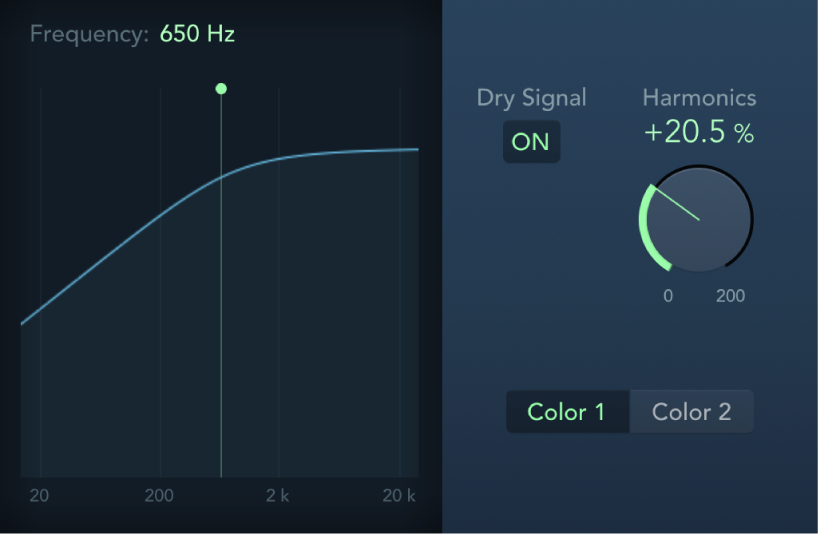Exciter controls in Final Cut Pro
Exciter generates high-frequency components that are not part of the original signal. It does this by utilizing a nonlinear distortion process that resembles the one used to produce overdrive and distortion effects.
Unlike this process, however, the Exciter distortion process involves passing the input signal through a highpass filter before feeding it into the harmonics (distortion) generator. Artificial harmonics are thus added to the original signal, and these added harmonics contain frequencies at least one octave above the threshold of the highpass filter. The distorted signal is then mixed with the original, dry signal.
You can use Exciter to add life to recordings, particularly audio tracks with a weak treble frequency range. You can also use Exciter to enhance guitar tracks.
For information about adding the Exciter effect to a clip and showing the effect’s controls, see Add Logic effects to clips in Final Cut Pro.

Frequency field: Drag vertically to set the cutoff frequency of the highpass filter. The input signal passes through the filter before harmonic distortion is introduced.
Frequency display: Shows the frequency range used as the source signal for the excite process. You can drag the green line or handle to set the cutoff frequency.
Dry Signal button: Turn on to mix the original (pre-effect) signal with the effect signal. Turn off to hear only the effect signal.
Harmonics knob and field: Set the ratio between the effect and original signals. If the Dry Signal button is turned off, this parameter has no effect.
Note: In most cases, it is preferable to select higher Frequency and Harmonics values, because human ears cannot easily distinguish between the artificial and original high frequencies.
Color 1 and Color 2 buttons: Turn on Color 1 to generate a less dense harmonic distortion spectrum. Color 2 generates more intense harmonic distortion.
Note: Color 2 also introduces more intermodulation distortions, which can result in unpleasant artifacts.